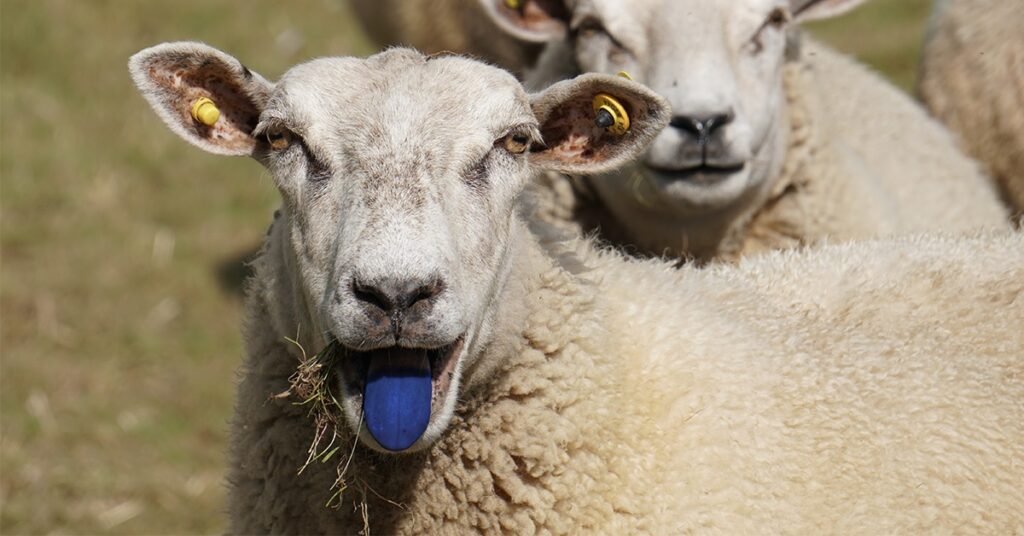Introduction
Bluetongue (BT), a viral disease, spreads through arthropods and impacts domestic and wild ruminants. Many animals do not exhibit noticeable symptoms but can prove fatal for certain species. The virus is transmitted among susceptible ruminants by insect vectors, primarily from the Culicoides genus, which becomes infected after feeding on viraemic animals carrying the virus.1 A recent breakthrough reveals that BT virus carriers stay active in winter, posing risks to cattle herds. Vigilance is crucial to control its spread, as this article outlines the research’s implications for agriculture.2
Understanding Bluetongue Virus
The BT virus is prevalent among cattle throughout the United States, especially in the southwestern region. It has infected nearly 20% of multiple California cattle herds. Exports of US livestock and cattle products to European and Asian markets have been prohibited to prevent their spread.2
It has been observed that not all virus-infected animal’s collapse. All ruminants are susceptible. Nevertheless, not all infected animals succumb to the virus. The most prevalent symptoms include:
- Increased body temperatures.
- Lethargy.
- Inflammation and tiredness.
- A painful region above the hooves.
- Occasional bleeding around the mouth.
The virus can affect all ruminants, including cattle, sheep, goats, and deer.
Activity During Winter
The recent research conducted by a team of experts aimed to investigate the behaviour of BT virus carriers during the winter season. The study involved monitoring several cattle herds in different regions of the United States, specifically focusing on the southwestern states, where the virus has shown considerable prevalence.
Surprisingly, the study found that BT virus carriers remain active during winter. These findings contradict the long-held assumption that colder temperatures would lead to reduced transmission and a decreased risk of infection during this time of the year.3

Control Strategies and Future Directions
In light of the new research, it becomes essential to seriously reconsider existing control measures and adopt a proactive approach to managing the spread of the Bluetongue virus. Some potential measures include:
- Vector Control: Implementing measures to control the population of Culicoides midges, which serve as vectors for the virus, can significantly reduce the risk of transmission.
- Vaccination Programs: Continually updating and administering effective vaccines can provide vital protection to cattle and reduce the severity of the disease.
- Enhanced Surveillance: Regularly monitoring cattle herds, particularly in high-risk regions, to promptly identify potential carriers and outbreaks.

Collaborative Disease Control Measures: The Way Forward
The challenges posed by the winter activity of BT virus carriers necessitate a united and coordinated approach involving various stakeholders:
- Research Study: Researchers must continue studying the virus’s winter transmission patterns to develop targeted control strategies. Improved surveillance and monitoring methods will aid in early detection and response to potential outbreaks.
- Collaboration among Veterinarians and Livestock Owners: Veterinarians play a critical role in disease prevention and control. By working closely with livestock owners, they can educate them about the risks, implement vaccination programs, and develop management practices to reduce virus transmission.2
- Information Dissemination: Livestock owners should stay informed about the latest research and disease control guidelines. This awareness can be achieved through educational programs, workshops, and effective communication channels.
- Government Support: Governments need to recognize the significance of the BT virus threat and provide resources and support for disease control initiatives. Includes funding research, surveillance programs, and offering financial assistance to affected farmers.
Conclusion
The discovery of BT virus carriers’ winter activity through new research highlights the need for constant vigilance and effective disease control measures. As the livestock industry faces challenges related to the spread of the virus, collaboration between researchers, veterinarians, and livestock owners becomes essential to safeguard cattle herds and ensure the sustainability of the agricultural sector. The industry may improve its performance by remaining informed and taking aggressive measures to mitigate the impact of the BT virus and protect the livelihoods of those involved in animal husbandry.
References
- BlueTongue. (Accessed on 31-05-2023). Available at: https://www.woah.org/en/disease/bluetongue/#:~:text=What%20is%20Bluetongue%3F,midges%20of%20the%20Culicoides%20species.
- Bluetongue Virus Carriers Active in Winter, Study Finds. (Accessed on 31-05-2023). Available at: https://www.news-medical.net/news/20230703/Bluetongue-virus-carriers-active-in-winter-study-finds.aspx
- “Bluetongue,” Animal and Plant Health Inspection Service. U.S Department Of Agriculture. (Accessed on 31-05-2023). Available at: https://www.aphis.usda.gov/aphis/ourfocus/animalhealth/animal-disease-information/cattle-disease-information/bluetongue-disease-info




